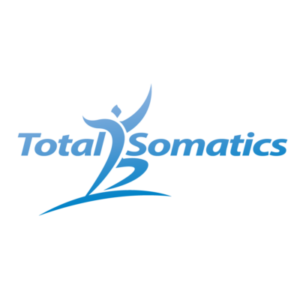Back Pain- the 21st century Epidemic
Have you had that pinch or pain trigger in your back, only to catch your breath and stop you from your activity? Do you find that your back pain and stiffness are starting to increase in severity and duration? Have you tried EVERYTHING and feel that “this is it” or “I’m just getting old?” In today’s blog we are going to consider the 21st Century Epidemic - BACK PAIN and look at how we can reverse the symptoms and increase our range of movement WITHOUT stretching. Plus I have provided a video with a Somatic movement to help release muscle tension in your back.
The Back Pain Epidemic
Over the last two decades we have advanced greatly in the areas of science, technology and medicine. We have been introduced to technology which has made life very convenient. But it has also caused detrimental effects to our posture. How so? Let’s consider a few statistics to understand why back pain has become an epidemic.
According to The Global Burden of Disease 2010, Low back pain is the single leading cause of disability worldwide. It has become the most common reason for missed work and the second most common reason for visits to the GP (the first being upper respiratory tract infections). Experts estimate that as much as 80% of the population will experience a back problem at some time in their lives. The majority of back pain issues presented to GPs are mechanical, meaning they are not caused by serious health conditions such as cancer, fractures, infections or arthritis but rather how we move, walk, stand and sit.
There are many triggers for back pain which can range greatly. A person can suffer pain from sprained ligaments, strained muscles, ruptures discs and joint inflammation. But as we have observed from the statistics above, the vast majority of back pain is mechanical. This implies that if we address the mechanics or HOW WE MOVE, we can reverse and rectify the issue. When we allow back pain which has been caused by a mechanical issue to develop, we begin to notice changes in our posture, decrease in mobility and a sense of feeling overwhelmed and disheartened that we cannot do what we use to enjoy such as walking, swimming or running.
The answer to dealing with Back Pain
In my Clinical practice, I see many clients who tell me they suffer with back pain and have tried EVERYTHING. They have stretched muscles, massaged muscles, manipulated muscles, strengthened muscles, drugged muscles, injected muscles and the list goes on! But they look confused that nothing has actually targeted the ROOT CAUSE of their pain. The approaches they’ve taken have purely been a band aid approach to an underlying problem.
Both in my clinical practice and with my online program at www.TotalSomatics.com, I teach clients how to read their body, to notice how it is moving and what their posture is actually telling them. Are they stooped forward? Are they loading into one leg? Does their bum stick out? Does their lower back feel over arched as they stand?
With this first stepping stone to noticing how the stand, move and sit mechanically, we can start changing habitual movement patterns. But how?
Within the area of science, technology and medicine we can be so grateful for is the study of Neuroscience. Thanks to the discovery of Neuroplasticity, we have come to understand that our brain is constantly changing and learning. It isn’t “hard wired” which experts claimed for years, instead it changes according to what we feed and expose our brain to; that includes good or bad habits.
So using the knowledge we have acquired in our understanding of Neuroplasticity, we are able to use skills to help our brain release long held habits of poor posture, stiffness and limited movement. When we start moving our muscles in a specific manner, we require focus and attention from our brain. These specific movements require us to contract our muscles, slowly release them and then completely relax before repeating the same movement several times. This process is known as PANDICULATION and it is what cats and dogs do over 40 times each day. They don’t stretch, they pandiculate. So basically when we start pandiculating, we change the message from brain to the muscles. The result of this repeated movement or pandiculation allows our muscles to “switch off.” We teach the brain (which controls all muscular activity) how to fully relax muscles which have been held tense and tight for a long time, due to poor habits. Remember the principles of Neuroplastcity, if we repeat a posture or movement regularly, it becomes a habit. If you have created a poor posture or way of walking or moving, your brain will see this as “the new normal” and hold certain muscles tense and tight constantly. This creates stiffness, tightness and an increase level of pain over time.
When we start pandiculating, is it amazing to see how adaptable our brain is. Within a short period of time, your brain absorbs a new and correct way to move your muscles and you will find your range of movement increases, your posture improves, your tense muscles soften, you feel less strain and discomfort through your joints plus your pain levels decrease.
I have created The Total Somatics Approach to Health and Wellness Online program to teach you how to improve posture, increase mobility, reduce pain and return to the activities you love to do. Within the online program you will find instructional videos, audios, down loadable support material, tutorials on subjects such as mindset and mindfulness plus “The Living series” podcasts in which I discuss in greater detail Somatics and its relevance in our daily life. I also have a podcast series with Dr Sarah Wilson in which we discuss developing a somatic lifestyle in health and nutrition. Once you join the Online program, it is available for 6 months and you can log in anytime. The program is self paced and performed in the comfort of your own home.
Below is an Instructional video taken from my Online program. Could you add this somatic movement in to your daily schedule? Create time for a few minutes each day for your own health and well being. Notice in time how you start to improve the range of movement in your back.
Before you start this Somatic movement remember these key points:
- Do not stretch or pull yourself into the movement. Go as far as your muscles will comfortably take you before you feel it is about to stretch. We are increasing movement back into your body and reminding your muscles how to contract and relax correctly. This is different to stretching.
- Listen to my cues on the video and move slowly so you can allow your brain to absorb this new information. From this new information, your brain will create new neural pathways (the action of neuroplasticity). The more you repeat these movements on a daily basis, the deeper this new neural pathway will become. As a result, it will create new, healthy movement patterns for your muscles.
- Once you are familiar with the movement, close your eyes whilst performing your somatic movement. This allows your brain to focus internally on what your body is doing. Keeping your eyes close will reduce the external stimulation to your brain, so you can focus on your internal environment.
- Look forward to hearing how this movement has helped reduce pain and improve your range of movement. The movement is called “The Tower Twist” and is part of The Total Somatics Approach to Health and Wellness Online program at www.TotalSomatics.com.
Enjoy the video clip and I look forward to teaching you more online at www.TotalSomatics.com.
Take care,
Heidi Hadley xx















Leave a Reply